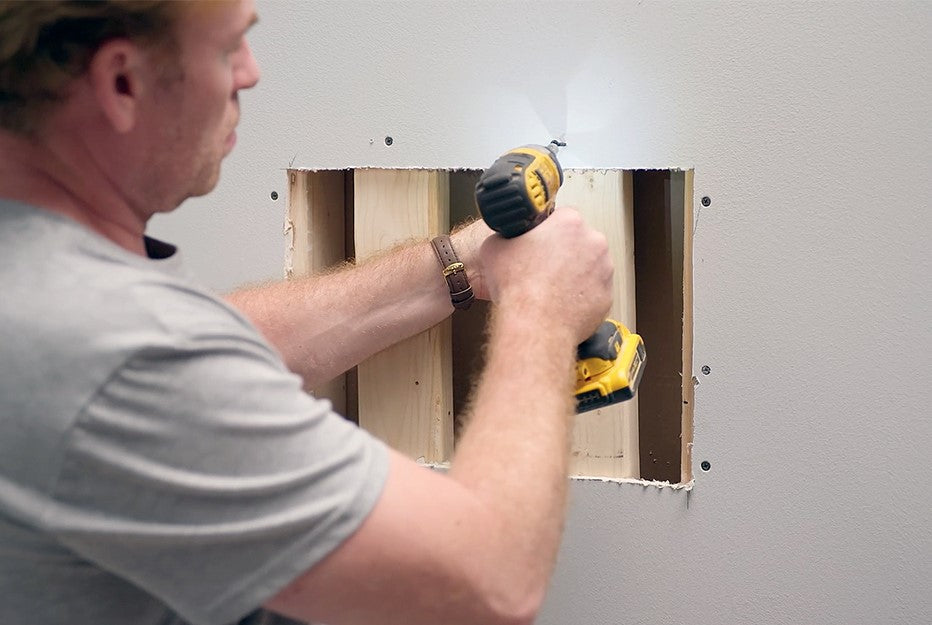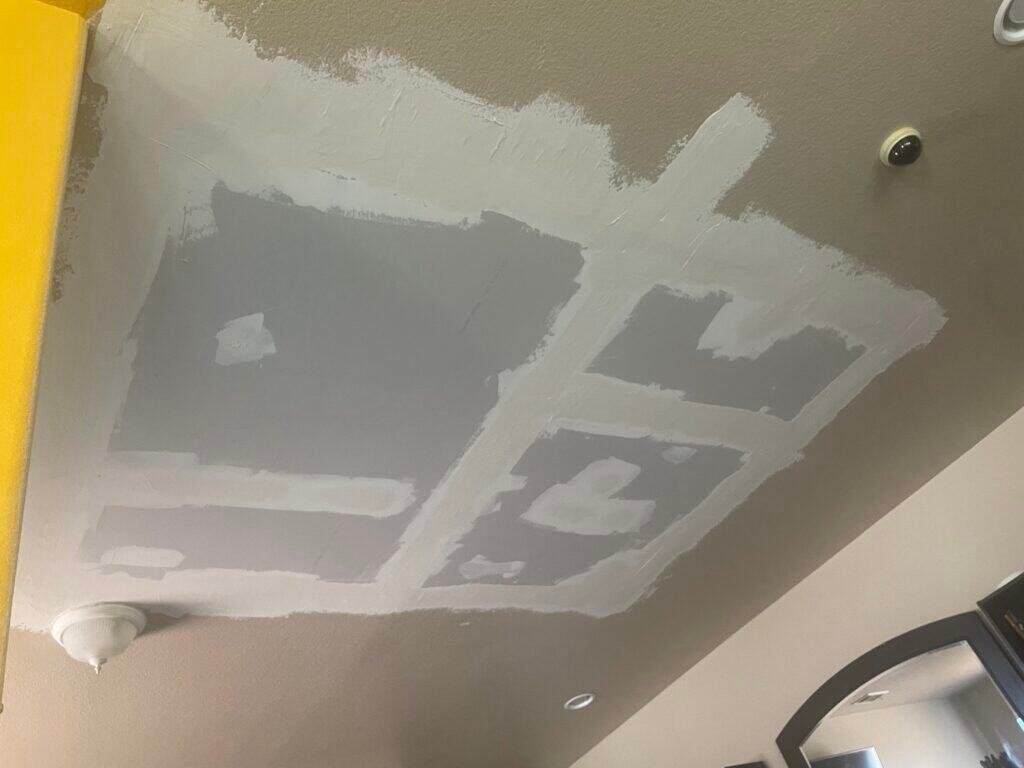Drywall contractors provide craftsmanship that completes every Interior Painting project.
Essential Tips for Effective Drywall Repair and Installation Techniques
Efficient drywall repair work and setup requires a careful method. Understanding the types of drywall and having the right devices is important. Correct techniques and precise dimensions can significantly affect the result. Several neglect essential steps like taping and fining sand, which can make or damage the final look. As projects advance, usual difficulties might develop that require attention. Checking out these ideas can result in a more effective and sleek finish.
Understanding Various Types of Drywall
Understanding the numerous kinds of drywall is important for any successful repair or installation job. Drywall, generally called gypsum board, is available in several varieties tailored for particular applications. Criterion drywall is one of the most commonly utilized type, perfect for general interior wall surfaces and ceilings. Moisture-resistant drywall, frequently green in shade, is designed for areas vulnerable to humidity, such as washrooms and cooking areas. Fire-resistant drywall, generally tinted pink or purple, is engineered to endure greater temperatures and is commonly used in garages or near heaters. Additionally, soundproof drywall helps in reducing noise transmission, making it ideal for multi-family homes or recording workshops. Specialized drywall, like concrete board, is made use of in wet locations like showers or bathtub surrounds. Recognizing these kinds aids in picking the best material for every task, ensuring toughness and effectiveness in repair services or new installments.
Essential Tools for Drywall Fixing and Installment
Having the right devices is crucial for effective drywall repair service and installment. A quality energy blade is essential for reducing drywall sheets precisely. A drywall T-square assists ensure straight sides, while a taping blade is necessary for applying joint compound efficiently over joints. In addition, a drywall saw enables removing damaged sections or fitting drywall around fixtures.
For hanging drywall, a power drill with drywall screws is important, as it makes it possible for protected and quick setup. A degree is additionally important to confirm that the drywall is straight and appropriately straightened. Once it has actually dried, a sanding block or post sander is necessary for smoothing out joint compound. Lastly, a gauging tape is essential for accurate dimensions, avoiding waste and ensuring a proper fit. Furnished with these tools, people can take on drywall tasks efficiently, resulting in professional-looking outcomes.
Step-by-Step Guide to Fixing Holes and Cracks
When resolving holes and splits in drywall, having the right devices and products is essential for a successful fixing. This guide describes the necessary things and offers a clear, step-by-step procedure to efficiently recover the surface area. Understanding these elements will help guarantee a seamless coating and durable results.
Devices and Products Needed
A well-equipped toolkit is important for effective drywall repair service and installment. Trick tools include an energy knife for cutting drywall, a tape procedure to assure precise sizing, and a drywall saw for larger openings. A putty blade is crucial for using joint substance smoothly, while a fining sand block or post sander assists achieve a seamless finish. For patching, a roll of fiberglass fit together tape or paper tape is essential to reinforce joints. Additionally, a drill and screws are required for safeguarding new drywall pieces. Vital products include joint compound, primer, and paint to complete the repair service. Having these tools and materials accessible guarantees a smoother, much more effective repair process, yielding professional-looking results.
Repair Work Refine Actions
Fixing holes and fractures in drywall requires a methodical approach to ensure a smooth surface. The area bordering the damages needs to be cleaned completely to get rid of dirt and debris. Next, for small fractures, a putty blade is utilized to apply a joint compound evenly over the area. For larger openings, a patch is essential; the damaged area is cut out, and a new piece of drywall is suited place, protected with screws. As soon as the spot is in position, joint compound is used to blend the edges. After drying out, sanding the area smooth is necessary. Ultimately, the repaired surface area ought to be primed and repainted to match the bordering wall, making certain an unnoticeable repair service.
Strategies for Installing Drywall Panels
Installing drywall panels needs cautious planning and accurate execution to assure a smooth and expert surface. It is crucial to measure the wall space accurately and reduce the panels to fit, guaranteeing that they straighten with the studs. Positioning the panels horizontally is typically advised, as this can improve the structural integrity and decrease the number of joints.
Utilizing drywall screws, installers should safeguard the panels every 16 inches along the studs, ensuring a company hold. It is essential to stay clear of overdriving the screws, which can damage the paper surface area. For sides and corners, utilizing an energy blade permits tidy cuts and a snug fit.

Finishing Touches: Taping, Mudding, and Fining sand
When the drywall panels are safely in position, the next essential action involves the complements of taping, mudding, and sanding. Insulation is essential for creating a seamless change in between panels and hiding joints. A quality drywall tape, either paper or fiberglass fit together, must be applied over the joints, ensuring it adheres correctly to the mud that will be used next.
Mudding, or using joint substance, follows the taping process. This substance loads spaces and smooths out the surface area. A very first coat ought to be used generously, feathering the sides to mix with the drywall. After the preliminary coat dries, succeeding layers may be required for a perfect surface.
Lastly, sanding is required to achieve a smooth surface area. A fine-grit sandpaper ought to be used to gently smooth out any type of blemishes. Care should be required to stay clear of over-sanding, which can harm the drywall - Drywall Installation Ogden Utah. Properly implemented, these completing touches produce a professional look prepared for paint
Tips for Keeping Your Drywall After Installment
Maintaining drywall after installment is crucial to preserving its appearance and architectural honesty. Regular cleaning is required; dirt and dirt can gather, so mild cleaning with a moist fabric is advised. House owners need to additionally inspect for any signs of wetness or mold, particularly in high-humidity locations like kitchen areas and shower rooms. If any kind of damages happens, it is necessary to resolve it without delay to prevent further issues.
Making use of furniture pads can help prevent scrapes or damages from heavy items. Furthermore, repainting the drywall with a top notch, cleanable paint supplies an additional layer of security and makes future cleaning easier. Stay clear of making use of rough cleaners or tools, as these can harm the surface area. Ultimately, maintaining a stable indoor climate with ideal moisture degrees will certainly assist avoid breaking or warping with time. By complying with these ideas, one can ensure that drywall continues to be in exceptional condition for several years to come.
Often Asked Concerns
How Much Time Does Drywall Take to Totally Dry After Installation?

Can I Set Up Drywall Over Existing Drywall?
Yes, drywall can be installed over existing drywall, but it is vital to assure the underlying surface area is protected and adequately prepared. This method can improve insulation and lower installation time, though it may add weight.
What Is the most effective Way to Soundproof Drywall?
The best means to soundproof drywall entails making use of specialized soundproofing products, such as resistant networks, acoustic caulk, and sound-dampening drywall. These techniques properly minimize sound transmission in between rooms, boosting total acoustic efficiency in living areas.
Exactly how Do I Select the Right Drywall Density?
To choose the best drywall density, take into consideration the application and location. Standard property walls typically make use of 1/2 inch, while ceilings or specialized areas may require 5/8 inch for additional toughness and soundproofing capabilities.
Exist Eco-Friendly Drywall Options Available?
Yes, green drywall choices are readily available. These consist of items made from recycled products, plaster boards with reduced unstable natural compounds (VOCs), and those making use of sustainable production processes, supplying environmentally-conscious options for construction and remodelling tasks.
Having the right devices is crucial for efficient drywall repair service and installation. For hanging drywall, a power drill with drywall screws is indispensable, as it enables safe and secure and quick installation. Key devices consist of an utility knife for cutting drywall, a tape step to guarantee accurate sizing, and a drywall saw for larger openings. Yes, drywall can be installed over existing drywall, yet it is necessary to guarantee the underlying surface area is safe and adequately prepared. The finest method to soundproof drywall involves using specialized soundproofing products, such as durable networks, acoustic caulk, and sound-dampening drywall.